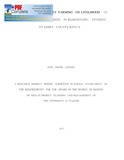| dc.description.abstract | The purpose of the study was to investigate the influence of dairy farming on livelihood of self-help group members in Kiabonyoru division, Nyamira county-Kenya. More than
250 breeds of cattle are recognized throughout the World. In Africa there are two main races of Cattle: Bos indicus (indigenous) and the Bos taurus (exotic or imported breeds). The two races can cross breed, and the crosses can be very productive both in terms of growth rates for beef, improved milk production as well as disease resistance. Kenya is a home to a wide range of cattle genotypes. Within the East and Central Africa region, Kenya has the highest number of exotic dairy cattle. As for indigenous breeds, Kenya also ranks high with Ethiopia and Sudan topping the list of African countries with the highest population of indigenous cattle breeds. According to the Organic farmer (TOF,
2010), he indicated that the program had not brought any desired improvement in their
livelihoods. The study was guided by four objectives: To investigate the extent to which distribution of dairy farming, Milk production and marketing, Management of dairy cow breed project, and the extent to which Dairy Waste Management has influenced the livelihood of dairy self help group members. It intends to answer the extent the distribution of dairy cow breed, milk production and marketing, management of dairy breed project has and Dairy Waste Management has influenced the livelihood of dairy self help members? The study is significant in the attempting to assist self help group members in making informed choices to improve their livelihood through the keeping of dairy cow breeds. The system theory originally proposed by Bentalantfy in 1928 guided the study. The finding will be used in policy formulation on food security. The researcher will use descriptive survey research design to carry out the study. The target population of the study will be all the agricultural officers and all dairy self-help members in Kiabonyoru, Nyamira North. Study will use questionnaires and observation methods in soliciting data. The researcher will employ simple random and census sampling to arrive at the sample size. The sample size will comprise of 275 dairy farmers from 2750 members of the 150 self-help groups and all Agricultural Officers (AOs). Validity was tested by use of construct validity. Reliability of instruments was ascertained by pre testing the questionnaires in the field. Descriptive statistics of means and percentages were used in analyzing the data. The findings were presented in the frequency tables after checking for errors, coding and classifying them and recommendations were made for future use in basic and applied research. | en_US |

